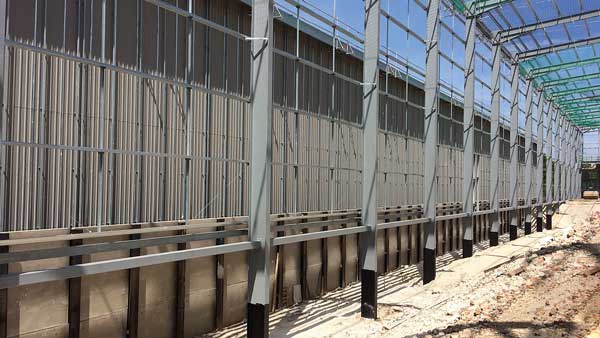Technical
AD 394: New Rules on the Selection of Execution Class for Structural Steel
Until recently, the process for determining Execution Class for structural steel was based on the approach given in BS EN 1090-2:2008+A1:2011 (issued August 2011). This approach has now been superseded by an alternative method given in BS EN 1993-1-1:2005+A1:2014 (issued June 2015) and the amendment to its accompanying National Annex.
BS EN 1090-2 introduced the concept of Execution Class as an aid to designers when specifying the Execution requirements for steel structures. Four Execution Classes were identified – Class 4 being the most onerous. Orthodox buildings are typically Class 2. Some years after its publication, the European committees responsible for the design (BS EN 1993-1-1) and Execution (BS EN 1090-2) standards for structural steel recognised that the recommendations for the selection of Execution Class would be better placed in the design standard, BS EN 1993-1-1. The work to move this guidance is now complete and the British Standards Institute (BSI) recently published a revised version of BS EN 1993-1-1 together with a new National Annex NA+A1:2014 to BS EN 1993-1-1:2005+A1:2014 (issued June 2015).
BS EN 1993-1-1:2005+A1:2014 now contains a new normative ‘Annex C – Selection of Execution Class’. There are a couple of major differences between the recommendations in Annex C of BS EN 1993-1-1 and those given in Annex B of BS EN 1090-2. The first difference is that the Annex C is normative and engineers must use the approach given in the standard. The guidance given in Annex B of BS EN 1090-2 was informative and engineers could either adopt the guidance or use an alternative approach. The second change concerns the approach for selecting Execution Class. The relationship in Annex C is based on Consequences Class (CC)/Reliability Class (RC), type of loading and the grade of steel. Production Class has been removed.
The new Annex C of BS EN 1993-1-1:2005+A1:2014 also contains provisions for national determination. These allow member states to recommend an alternative approach to the selection of Execution Class and to place limitations on the use of Execution Class 1. The UK’s approach for the selection of Execution Class is given in Clause NA.2.27.3 and Table NA.4. of the revised National Annex to BS EN 1993-1-1. Table NA.4. is reproduced at the bottom of the page.
Note that the broad division in the table is between structures subject to fatigue, and those where fatigue is not a design consideration. EXC2 is the anticipated Class for most building structures. Bridges, being subject to fatigue, will generally be Execution Class 3.
The use of EXC1 is not encouraged by the standard or the UK National Annex. The standard states that EXC1 “is not endorsed for general use.” and the National Annex notes that the use of EXC1 “might result in a higher probability of structural failure than is normally accepted for most structures in the UK”
Although BS EN 1090-2:2008+A1:2011 has not yet been amended to remove Annex B, it is recommended that the selection of Execution Class should be based on the recommendations given in ‘normative’ Annex C of BS EN 1993-1-1:2005+A1:2014 and its supporting National Annex.
BCSA is in the process of developing a practical guide to the selection of Execution Class based on the National Annex, which will be available early 2016.
Contact: Dr David Moore
Tel: 0207 7478122
Email: advisory@steel-sci.com














